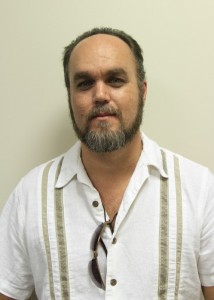 I was sitting with my brother in law watching television a few nights ago. It was late and we had been busy all day with Christmas stuff. I had made some hot apple cider with a little Irish whiskey, and we sipped it as we watched an old movie. A long commercial came on advertising the benefits of a national chain of cancer treatment centers. I remarked on how strange it seems to me that something like medical care is treated like a commodity, to the point of needing a slick ad campaign.
I was sitting with my brother in law watching television a few nights ago. It was late and we had been busy all day with Christmas stuff. I had made some hot apple cider with a little Irish whiskey, and we sipped it as we watched an old movie. A long commercial came on advertising the benefits of a national chain of cancer treatment centers. I remarked on how strange it seems to me that something like medical care is treated like a commodity, to the point of needing a slick ad campaign.
Don’t get me wrong. I am not a communist, socialist or even an anti-capitalist. But I am also puzzled by the way that certain societal problems are addressed economically. It seems reasonable to me that some needs of society might not fit a profit driven model of development.
This was driven home to me a few days ago when I learned that a large grant the Georgia Conflict Center has been awaiting was not awarded. We had planned on using the money to fund a restorative justice program with the Athens Clarke County juvenile court. Initially, the program was to be targeted at kids from low income neighborhoods, and would team them with community volunteers in an effort to support the young people’s reintegration into the community.
The hard part of establishing a restorative system is making connections and getting agreements from the various stakeholder groups. In our case this includes the court, the Department of Juvenile Justice, the police, and several other players. Once these connections are in place, any number of approaches will work to bring together offenders, victims and community members.
In our case all of these facets are in place. We only need money to train facilitators and cover our expenses. None of the governmental entities we are engaged with have any money to spare, so we have been seeking grant funding.
Consider that we are looking for this funding even though restorative justice approaches have been demonstrated to work more effectively at reducing youth involvement in crime as well as generating more satisfactory results for victims. Numerous studies have reached these conclusions, and to top it off, community based restorative approaches are typically more cost effective than traditional criminal justice strategies like incarceration, fines and probation.
Why is it that a more effective way of doing this work has to go begging for money? In the long run, there is no overall monetary gain to be had by society at large when it comes to dealing with crime. We can only hope to address individual crimes and societal conditions in an effort to minimize damage and reduce future crime. This means that a capital model doesn’t work very well.
This isn’t unique to my work. It applies to a lot of work done by non profit organizations. Even though the work of these groups is often lauded, it is not well supported financially. The upshot of this is that groups end up spending more time on fundraising and grant writing than on doing the work that we count on them to do.
This will be the case with me as I commence the new year by researching and writing grant proposals and looking for ways to monetize more of our services. I think there has to be a better way to fund this work, and I will be looking for it this year. All suggestions are welcome!
